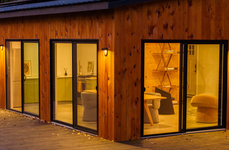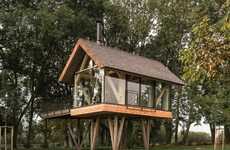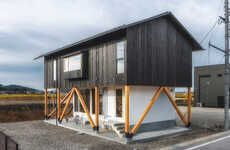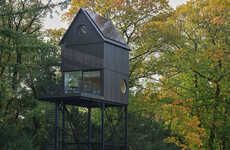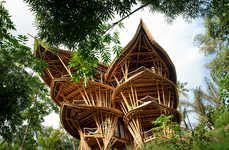
This Elevated Eco House is a Practical Space That Reduces Waste
Christopher Magsambol — August 6, 2015 — Eco
References: treehugger
The Toothman Foundation and ELEVATE have teamed up on an elevated eco house experiment in Hawaii. The team hopes to create practical spaces that address global, environmental issues.
The small, 400 square foot house is square in shape with a number of interesting features. The roof is made of grass and plants, allowing for rain water collection, and is equipped with solar panels. The exterior walls are called "living walls," and are also made of grass and various plants, which is helpful in Co2 mitigation, shade and cooling. The walls are watered with captured rain water.
Interestingly, the house is propped up on a pedestal with a firm hollow base. The exposed space underneath creates a shaded parking spot, and provides a safe place in case of a storm.
The campaign is currently raising money on Kickstarter.
The small, 400 square foot house is square in shape with a number of interesting features. The roof is made of grass and plants, allowing for rain water collection, and is equipped with solar panels. The exterior walls are called "living walls," and are also made of grass and various plants, which is helpful in Co2 mitigation, shade and cooling. The walls are watered with captured rain water.
Interestingly, the house is propped up on a pedestal with a firm hollow base. The exposed space underneath creates a shaded parking spot, and provides a safe place in case of a storm.
The campaign is currently raising money on Kickstarter.
Trend Themes
1. Elevated Homes - Developing elevated homes with sustainable features and environmental benefits.
2. Living Walls - Exploring the use of living walls and integrating them in eco-friendly designs.
3. Hawaii Eco-homes - Promoting eco-friendly homes in Hawaii to address global environmental issues.
Industry Implications
1. Construction - The construction industry can explore building elevated eco-homes using sustainable materials and green technologies.
2. Renewable Energy - Renewable energy companies can integrate solar panels and other innovative technologies to power elevated homes and reduce carbon footprint.
3. Environmental Conservation - Environmental conservation organizations can promote the construction of elevated homes with living walls and green roofs to mitigate carbon emissions and reduce waste.
6.4
Score
Popularity
Activity
Freshness


